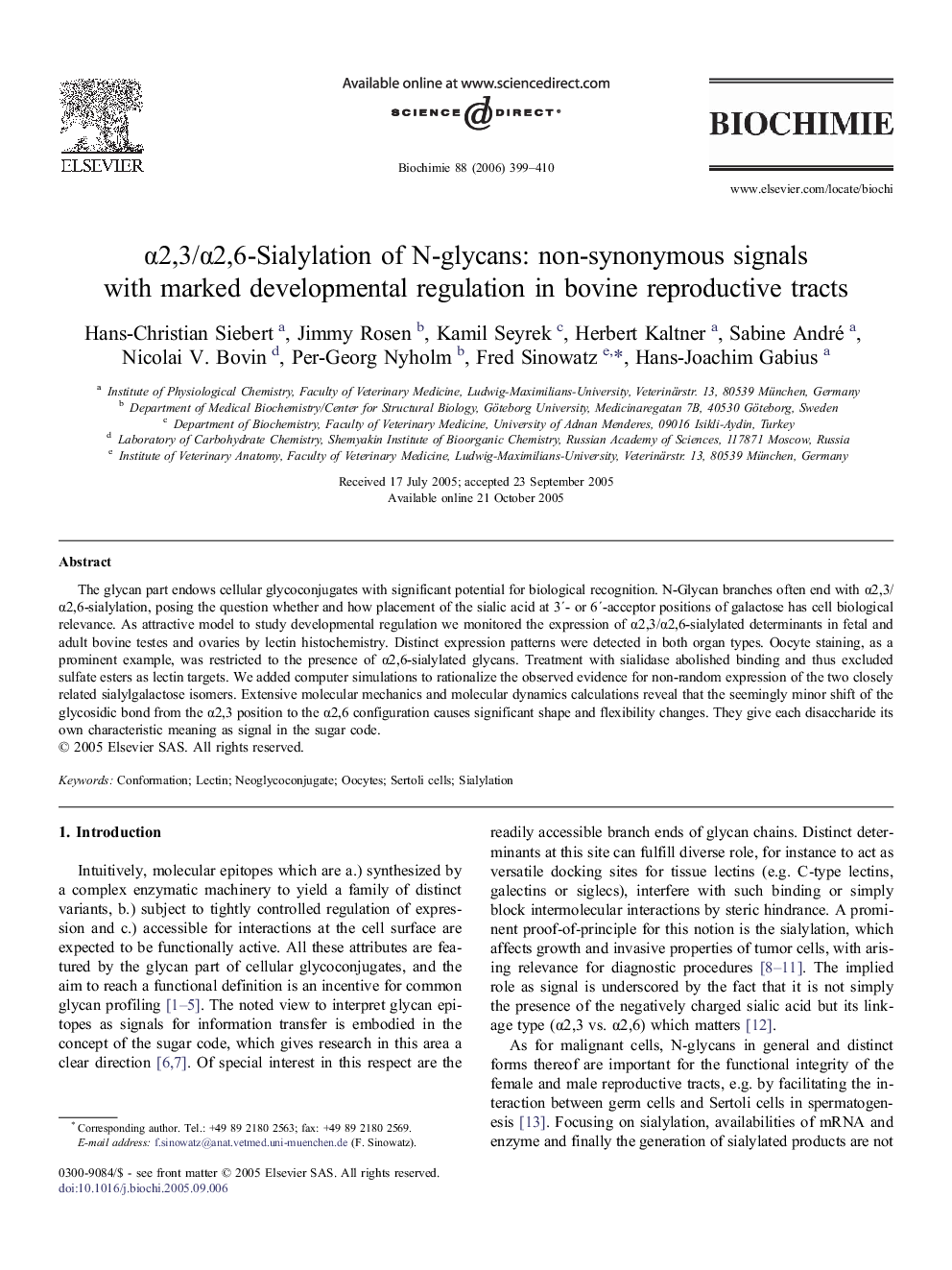| Article ID | Journal | Published Year | Pages | File Type |
|---|---|---|---|---|
| 1953486 | Biochimie | 2006 | 12 Pages |
The glycan part endows cellular glycoconjugates with significant potential for biological recognition. N-Glycan branches often end with α2,3/α2,6-sialylation, posing the question whether and how placement of the sialic acid at 3´- or 6´-acceptor positions of galactose has cell biological relevance. As attractive model to study developmental regulation we monitored the expression of α2,3/α2,6-sialylated determinants in fetal and adult bovine testes and ovaries by lectin histochemistry. Distinct expression patterns were detected in both organ types. Oocyte staining, as a prominent example, was restricted to the presence of α2,6-sialylated glycans. Treatment with sialidase abolished binding and thus excluded sulfate esters as lectin targets. We added computer simulations to rationalize the observed evidence for non-random expression of the two closely related sialylgalactose isomers. Extensive molecular mechanics and molecular dynamics calculations reveal that the seemingly minor shift of the glycosidic bond from the α2,3 position to the α2,6 configuration causes significant shape and flexibility changes. They give each disaccharide its own characteristic meaning as signal in the sugar code.
